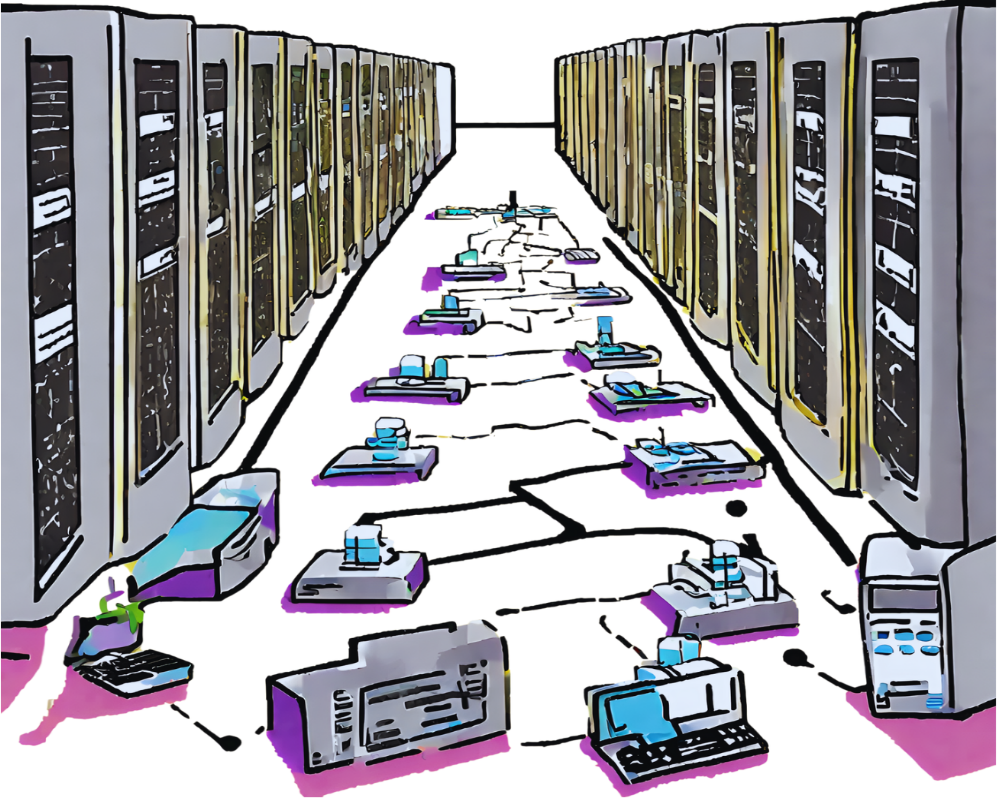In this age of relentless march of technological progress, the moral imperative of sustainability has assumed a central role in social discourse. The IT industry in particular has been scrutinized, whose exponential growth has raised pressing concerns about its environmental impact. Yet, amid the maze of challenges, a beacon of hope emerges: artificial intelligence (AI). Through its judicious application, AI promises that every component of the IT infrastructure can fine-tune energy consumption with the ability to reduce its carbon footprint. This application paradigm not only serves as a boon for environmental conservation but also heralds a renaissance of sustainability in technology.
The proliferation of digital technology has led to a rapid increase in the demand for computing power and data storage. As a result, data centers, which form the backbone of IT infrastructure, have become major energy consumers. The energy-intensive nature of data centers, combined with the increasing digitization of business and society, has raised concerns about their environmental impact. However, AI offers a transformative solution to these pressing challenges.

What AI can do?
At the heart of AI’s potential lies its ability to analyze vast amounts of data and make intelligent decisions in real-time. In the context of IT infrastructure, AI can optimize energy usage across various components, including servers, cooling systems, and networking equipment. By leveraging predictive analytics and machine learning algorithms, AI can dynamically adjust energy consumption based on workload demand, environmental conditions, and other factors.
Where to apply AI
One of the primary applications of AI in optimizing energy usage within IT infrastructure is through predictive maintenance. Traditional maintenance practices often involve scheduled inspections and repairs, regardless of actual equipment condition. This approach not only leads to unnecessary downtime but also results in wasteful energy expenditure. AI-driven predictive maintenance, on the other hand, relies on data analytics to forecast equipment failures before they occur. By detecting early warning signs of potential malfunctions, AI enables proactive maintenance interventions, thereby reducing energy wastage and extending the lifespan of IT equipment.
Furthermore, AI-powered workload management plays a crucial role in optimizing energy usage in data centers. Through advanced analytics and optimization algorithms, AI can dynamically allocate computing resources to match workload demands. This ensures that servers operate at peak efficiency while minimizing idle capacity, which in turn reduces energy consumption. Additionally, AI can optimize the placement of virtual machines and workload scheduling to maximize energy efficiency across the entire data center infrastructure.
Another crucial element of AI-driven energy optimization
Another key aspect of AI-driven energy optimization is the implementation of smart cooling systems. Data center cooling accounts for a significant portion of energy consumption, yet traditional cooling methods often operate inefficiently. AI-powered cooling systems utilize real-time data analytics and predictive modeling to dynamically adjust cooling settings based on temperature fluctuations, server workload, and airflow patterns. By optimizing cooling operations in this manner, AI can achieve substantial energy savings while maintaining optimal operating conditions within the data center environment.
AI can facilitate the adoption of renewable energy sources within IT
Moreover, AI can facilitate the adoption of renewable energy sources within IT infrastructure. By analyzing historical energy consumption patterns and environmental data, AI can optimize the integration of renewable energy generation, such as solar and wind power, into the data center’s energy mix. AI-driven energy management systems can forecast energy production from renewable sources and dynamically adjust energy consumption to maximize the utilization of green energy. This not only reduces reliance on fossil fuels but also contributes to the overall sustainability of IT operations.
In addition to its direct impact on energy efficiency, AI can also enhance sustainability through the optimization of supply chain and logistics operations. By analyzing data from various sources, including suppliers, manufacturers, and transportation networks, AI can optimize inventory management, route planning, and resource allocation. This leads to reduced fuel consumption, lower emissions, and improved overall efficiency throughout the supply chain.
Challenges
However, realizing the full potential of AI in optimizing energy usage within IT infrastructure requires concerted efforts from all stakeholders. Collaboration between technology providers, data center operators, policymakers, and environmental advocates is essential to drive innovation, promote best practices, and overcome barriers to adoption. Additionally, investments in research and development are needed to advance AI technologies and address challenges such as data privacy, cybersecurity, and regulatory compliance.
Game-changing opportunity
The utilization of artificial intelligence represents a game-changing opportunity to enhance sustainability within the IT industry. By optimizing energy usage across IT infrastructure components, AI can significantly reduce carbon emissions, mitigate environmental impact, and promote a greener future. As we embrace the transformative power of AI, let us work together to unlock its full potential and create a more sustainable world for generations to come.

 English | EN
English | EN 